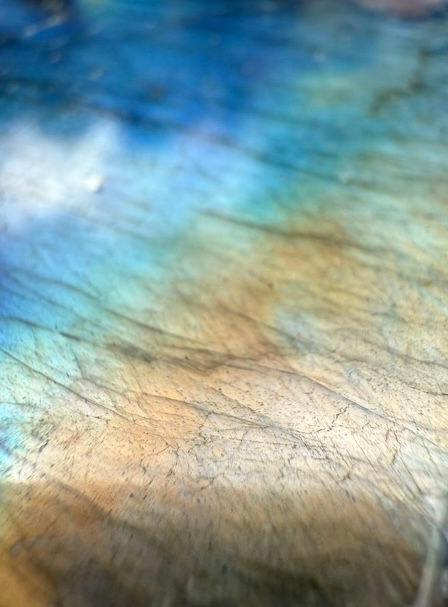Labradorite
- covenofcrystals
- Jun 16
- 1 min read
Here’s a detailed breakdown of labradorite, covering its chemical composition, colours, uses, mining locations, and the reason behind its signature flash:
Chemical Composition
Mineral Class: Feldspar (specifically, a plagioclase feldspar)
Formula: (Ca,Na)(Al,Si)₄O₈
A mix of calcium and sodium aluminium silicate
Part of the plagioclase series between albite (Na) and anorthite (Ca)

Colour & Appearance
Base colours: Grey, grey-black, dark greenish-grey
Flash colours (Labradorescence):
Electric blue
Green
Gold
Orange
Pink
Violet (rare)
Multicolour flashes (sometimes in "spectrolite")

Why Does Labradorite Flash?
The iridescent flash, called labradorescence, is caused by:
Light interference within microscopic, layered structures of different compositions inside the stone.
These layers reflect and scatter light at various angles, creating the play of colours.
The phenomenon is similar to soap bubbles or butterfly wings, but on a crystalline level.
Mining Locations
Labradorite is found worldwide, but notable sources include:
Labrador, Canada (where it was first discovered in 1770 — hence the name)
Finland (Spectrolite – very vibrant type of labradorite)
Mexico
Russia
Norway
USA (Oregon, Utah)
Madagascar (known for vibrant colours)

Uses
1. Metaphysical / Spiritual
Known as the Stone of Transformation
Said to enhance:
Intuition
Psychic abilities
Protection from negative energy
Creativity and self-discovery
Popular in crystal healing and energy work
2. Jewellery
Common in rings, pendants, earrings, often cabochon-cut to showcase labradorescence
Durable enough for daily wear (Mohs hardness: 6 – 6.5)
3. Decorative / Architectural
Used in countertops, tiles, and ornamental carvings
Labradorite slabs are polished to highlight their flash





